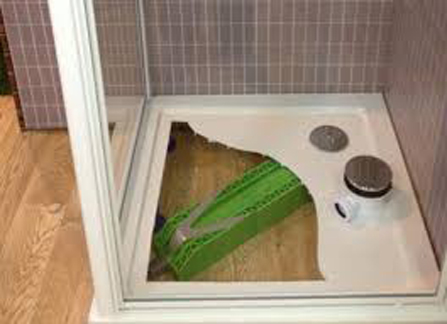ENERGY REUSE IS THE FUTURE
The future won’t just be about saving energy, it will be about looking at clever ways to reuse energy that would otherwise be wasted.
As the debate around climate change intensified the focus has been on reducing our carbon footprints, in particular by cutting our energy usage.
However, it is becoming clear that this, on its own, will not be enough to halt climate change. Not only do we need to find new sources of energy, we also need to find inventive ways to reuse it.
In the future, wasting energy will be unthinkable – although this is good news, it won’t be enough to tackle the issues of increased energy demand and an ever-growing population. So, we will need to turn our attention to recapturing and reusing energy as well.
 Massive amounts of energy are being lost when we heat homes, businesses and other buildings; the world over, energy wastage such as this is happening on a huge scale. And this needs to change if we’re to slow climate change and create a future with a sustainable energy system.
Massive amounts of energy are being lost when we heat homes, businesses and other buildings; the world over, energy wastage such as this is happening on a huge scale. And this needs to change if we’re to slow climate change and create a future with a sustainable energy system.
More energy is wasted than used
In the UK alone, more than half of the energy produced is wasted, right at the source. 54 percent of heat energy generated at power plants escapes before it can be turned into useful electricity, according to a 2015 report by the Association for Decentralised Energy.
This wasted energy is worth £9.5bn per year. Per person, that’s equivalent to more than half the average UK annual electricity bill – about £592.
A great deal of heat energy is lost in homes and buildings that are not energy efficient as well.
This is why the 2012 Energy Efficiency Directive requires all new homes in the EU to have nearly zero-energy building (NZEB) status by 2020, and all new public buildings to be NZEBs by 2018.
According to UK energy saving advice website, TheGreenAge, 35 percent of heat energy is lost in the home through the walls and gaps in and around windows and doors, 25 percent is lost through the roof, and another 10 per cent is lost through the floor.
Insulation, sealing gaps, switching to more efficient modern boiler systems, and installing double glazed windows are obvious ways of reducing this kind of home energy wastage.
Another, often overlooked problem is water heat wastage.

Around 15-30 percent of a typical home energy bill is spent on heating water, while almost 90 percent of the energy used to heat shower water is wasted.
This inspired me to design Zypho, a water heat recovery device that’s installed under a shower tray or bathtub to capture and reuse around 10°C of lost heat energy that would otherwise go down the drain.
This energy is then reused to heat the cold water travelling to the shower tap, cutting carbon footprints and reducing energy bills by up to 30 per cent.
Energy recovery is also occurring in different forms, and on a larger scale. For example, in the Swedish capital, the Stockholm Data Parks project is harvesting heat energy generated from the masses of computers in its data centres to help heat the homes of over 900,000 people in the city.
The cold water used to cool the air in data centres to stop servers from overheating is, in turn, heated-up itself. But rather than wasting this now-hot water, it is distributed back to a cooling and heating agency and redistributed for heating homes.
These two example, Zypho and Stockholm Data Parks, illustrate how a combination of small scale units and large industrial scale projects can help us get more from the energy we are currently using. In the future, this heat recovery will be the key to reducing our energy use.
New and unlikely ways to generate energy
As well as reusing wasted energy, pioneers are also looking at using energy from some unlikely sources.
For instance, Belgian company Turbulent is pioneering whirlpool turbines, which harvest river or canal water to provide low-cost energy to small rural communities, 24 hours a day.
It’s even possible to harvest piezoelectric energy – electricity generated by the use of pressure – as the Institute of Physics (IoP) explains.
One example involves using the force required to press a button to charge small, low-power electronic devices, thus replacing the need for batteries. This would also cut down the use of batteries, which are already complicated to dispose of as they contain chemicals and metals that are harmful to the environment, and to humans.
On a larger scale, piezoelectric floor tiles could harvest “the kinetic energy generated by the footsteps of crowds to power ticket gates and display systems”. One company making this a reality is Pavegen which has installed smart floors and pavements in a number of locations.
As well as harvesting otherwise wasted energy, we will also see a shift towards the reuse of waste itself.
Marcus Gover, director at the UK advocacy group WRAP, told the Guardian that by 2025, waste disposers “won’t be burying or burning people’s rubbish as they do today”, they will instead be returning “valuable resources to manufacturers”.
One solution, the Guardian highlights, “is turning waste into energy” – a market predicted to be worth $37.64bn by 2020.
The article also references U.S. biotech firm, LanzaTech, “that uses patented microbes to convert carbon-rich waste into biofuel via a gas fermentation technology” and Novozymes, a Danish biotech firm that uses “an enzyme-based solution that converts used cooking oil or other lower grade oils into biodiesel”.
All around the world, solutions are being tried and tested to create a greener and more energy efficient future.
So whether solutions are considered on large, city-wide scales, in the context of small communities, or even within each individual home and building, the first pioneers are crafting new energy efficient solutions, as well as promoting a whole new way of thinking.
These steps may seem small and insignificant on their own, but by implementing many small steps at once, we can recapture and reuse a huge amount of energy that would otherwise be wasted heating our atmosphere.
And if we’re to truly overcome the future energy challenges fuelled by overpopulation and climate change, this new mindset will be key to solving them.

About Zypho
Zypho is a water heat recovery device that reduces shower water heating energy bills by up to 30 per cent and improves energy efficiency.
It is installed under a shower tray or a bathtub, becoming part of the drainage system and allowing around 10°C of shower water that passes through the device to be recovered. The recovered heat is then transferred to the cold-water mains before arriving at the shower tap mixer already preheated, meaning less hot water is required to reach the optimum shower temperature.
Zypho Online
Website: http://zypho.eu
Facebook: https://www.facebook.com/Zypho/
LinkedIn: https://www.linkedin.com/company/zypho/
Seedrs: https://www.seedrs.com/zypho
Citations
54 per cent of heat energy generated at electricity plants escapes before it even reaches households, according to a 2015 report by the Association for Decentralised Energy:
https://www.lowcarbonenergy.co/wp-content/uploads/2015/less-waste-more-growth/lwmg.pdf
2012 Energy Efficiency Directive:
http://eur-lex.europa.eu/legal-content/EN/TXT/?qid=1399375464230&uri=CELEX:32012L0027
TheGreenAge: Energy lost in the home stats:
https://www.thegreenage.co.uk/where-am-i-losing-heat-home/
Stockholm Data Parks project harvesting heat energy generated from the masses of computers in its data centres to heat 900,000 homes in the city:
http://www.bbc.com/future/story/20171013-where-data-centres-store-info—and-heat-homes
Belgian company Turbulent are pioneering whirlpool turbines, which harvests river or canal water to provide low-cost energy to small rural communities, 24 hours a day:
http://uk.businessinsider.com/whirlpool-turbine-water-energy-turbulent-belgian-green-energy-2018-2
Harvest piezoelectric energy – electricity generated by the use of pressure – the Institute of Physics (IoP):
http://www.iop.org/resources/energy/materials/page_50300.html
The Guardian, waste reuse:
https://www.theguardian.com/sustainable-business/2015/feb/23/future-of-waste-five-things-look-2025

